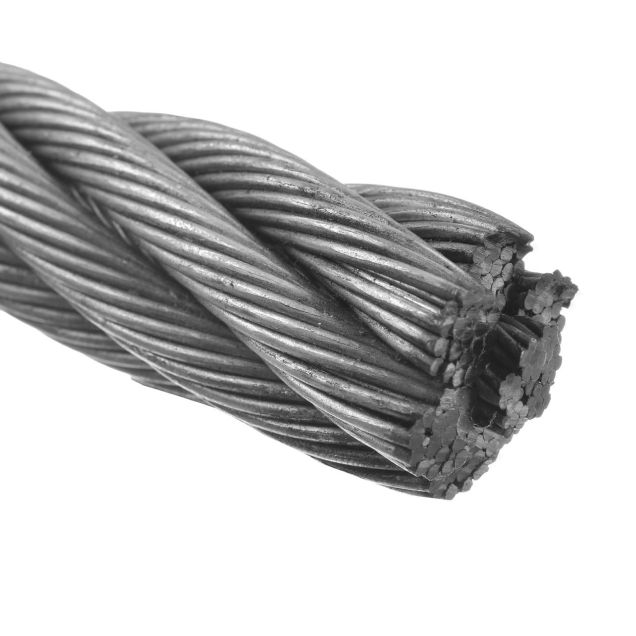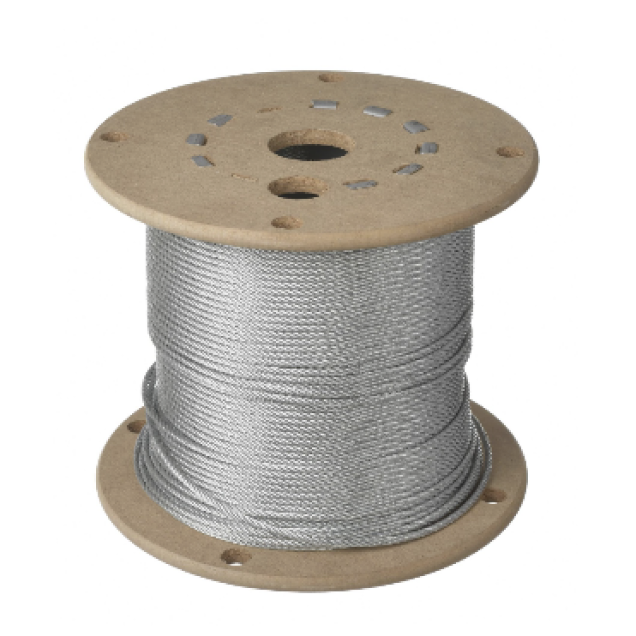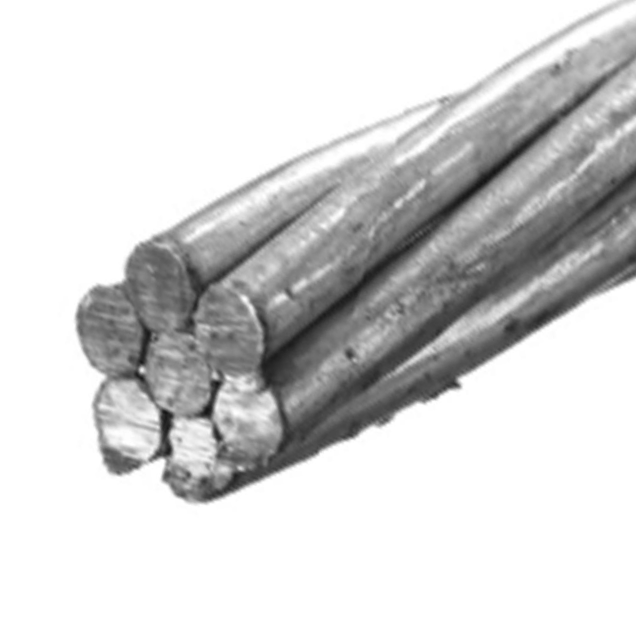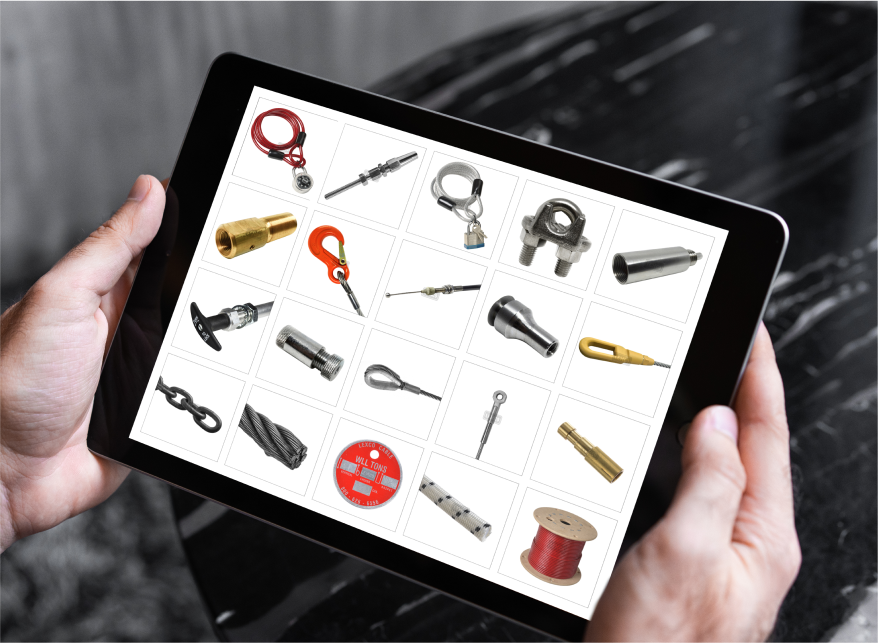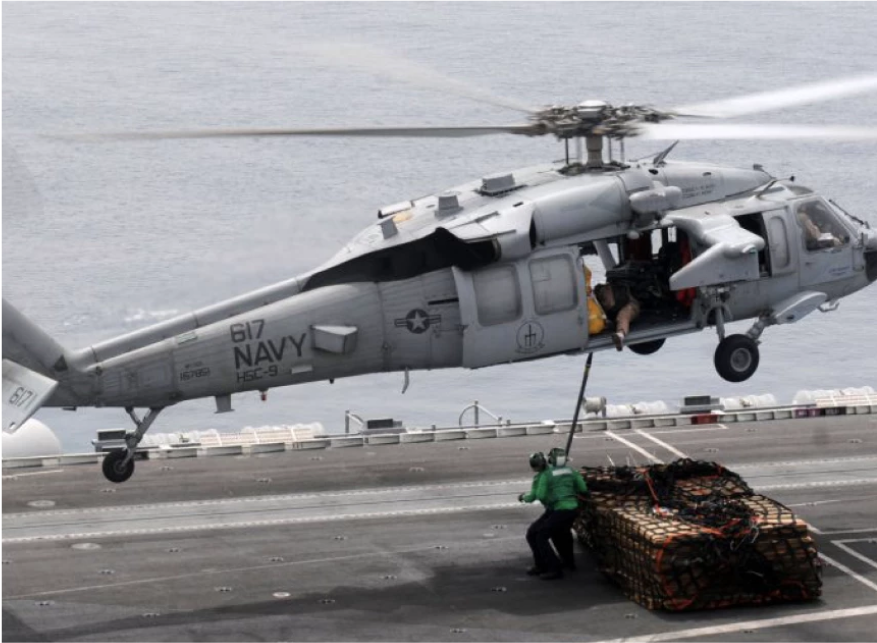
Introduction to Galvanized Wire Rope
Rope is one of the oldest inventions and has an incredible range of uses. However, as modern industry has advanced, rope requirements have risen far beyond the capabilities of even the strongest fiber ropes. Industries such as mining, shipping, heavy industry manufacturing, and many more must regularly lift, move, and hold incredibly heavy and complex loads.
To meet these demands, an entire industry has evolved to specialize in precisely designing and manufacturing braided wire ropes. The average person may only see wire ropes as simple braided strands of metal, but that hides an incredible level of complexity; metal wire ropes comprise thousands of different metallurgies, designs, production methods, and industry regulations.
Components of Wire Ropes
To understand the complexities of galvanized wire ropes, one must understand the basics of wire ropes. All wire ropes, no matter their unique design, are comprised of the following basic components:
- Core: The central material that strands are coiled around to form a rope. A rope core is often made of a smaller metal rope, a single strand of coiled wires that may or may not match the makeup of the surrounding strands, a coiled fiber rope, or a solid polymer core.
- Wire: The individual lengths of solid metal pulled into a long cylinder. These individual wires can be of different thicknesses and made of several metals or metal alloys. Wires are essentially the basic unit of a wire rope.
- Strand: The standard term for several wires coiled around a central straight wire. The number of wires in a strand varies (six coiled wires is a common design), and they may be wrapped around a wire of the same material, a different metal, or even a non-metallic polymer.
Basic Properties of Wire Ropes
How are ropes designed, and what are the considerations in a rope’s design? When ropes are tested, the following performance metrics are the most commonly considered.
- Strength: The strength of a rope is the amount of tension it can undergo before failing. The point at which rope strands begin to tear is called the Minimum Breaking Force. A tension test will also determine how much force is required to deform a rope. If a deformation is small enough that the rope returns to its original shape, it’s called Elastic Deformation. If the rope is stretched so far that it doesn’t return to its original shape but doesn’t break, it’s called Plastic Deformation.
- Fatigue Resistance: Fatigue is the deformation of a rope, either oblique or perpendicular to its length. If a rope is bent side-to-side and deforms in one of those directions, it is fatigued. Fatigue resistance is a rope’s ability to be repeatedly bent in this way and how much it can be bent in this way while maintaining its original shape and performance characteristics.
- Crush Resistance: When a rope is put under external pressure, that is crushing. A rope that is crushed is forced into a smaller space, which prevents the wires and strands from shifting as they should. If a rope undergoes immense crushing, the outer wires of a rope may flatten and press outward in a process called “peening.” A rope’s crush resistance is its ability to resist this type of damage and the amount of force required to peen a rope is an important metric to record.
- Abrasion Resistance: Wear is common and expected as rope ages and sees repeated use. Abrasion is the loss of metal from a rope as it is rubbed against other metal. Ropes can be abraded by scraping against other hard surfaces, or they can be abraded by themselves, as the individual wires of a rope rub against each other and slowly wear themselves away. Abrasion resistance is a rope’s ability to be rubbed and scraped without significant material loss.
- Rotation Resistance: Ropes are twisted about a center causing friction between the strands, which gives the rope its strength. However, ropes that are rotated while in service can fail either by being unraveled or by being over-twisted until strands begin to snap. This most commonly happens if a heavy load begins to spin. This rotational force, or “torsion,” is naturally resisted by the rope but can be overcome. The rotation resistance of a rope is its ability to resist breakage or deformation due to excessive torsion.
Wire Materials
The material composition of the wires determines the fundamental characteristics of a rope. The wire rope industry primarily manufactures five types of wire:
- Bright Wire: High-carbon steel wire that is finished uncoated is called “bright.” Not all bright wires are the same; each can be made from a slightly modified alloy that meets exact performance requirements, but their basic composition remains high-carbon steel.
- Galvanized-to-Finish Wire: Galvanization is a process of steel post-treatment in which carbon steel is coated in a layer of zinc. The most common forms of galvanization are hot dip, in which a piece of steel is dipped or run through a bath of molten zinc, and electro-galvanizing, in which a piece of steel is coated in zinc by use of an electric current passing from a zinc anode to the steel cathode. Galvanized-to-finish wire is manufactured to a specific diameter smaller than its final diameter and then coated in a thick layer of zinc that brings the wire to its final size.
- Drawn Galvanized Wire: As opposed to wire that is galvanized up to its finished diameter, drawn galvanized wire is coated in a layer of zinc that brings its diameter above the final intended diameter of the wire. The wire is then pulled, or drawn, to reduce its diameter to the product’s intended final diameter.
- Zinc-Aluminum Wire: While not technically considered galvanization, zinc-aluminum plated wire is coated in an alloy of zinc and aluminum with different performance characteristics than simple galvanized wire. Sometimes referred to as “mischmetal,” it can be plated-to-finish or drawn down to final size exactly as regular galvanized wire.
- Stainless Steel Wire: Stainless steel is an entirely different material than carbon steel. It is primarily an alloy of steel containing at least 11% (generally up to 18%) of chromium, and often includes up to 8% nickel. Stainless steel is naturally corrosion resistant and is generally left uncoated as a finished product.
The Benefits of Galvanized Wire
Though there are many designs of wire ropes, the benefits of galvanized wire rope make it an ideal material for a variety of applications, including:
- Strength: Galvanized wire is manufactured from high carbon steel. It maintains the strength characteristics and resistance to other forms of wear similarly to bright steel. Though stainless may be strong enough for many applications, a high carbon steel is required for heavier loads.
- Corrosion Resistance: Galvanization protects the wire from corrosion over a long lifetime of use. Bright steel will begin to corrode as soon as it is exposed to oxygen, especially if it’s exposed to water repeatedly. In addition, the zinc coating provides a near identical level of corrosion resistance to the underlying steel as compared to uncoated stainless steel.
- Reliability: Though galvanized-to-finish wire rope does sacrifice about 10% of its final strength, drawn galvanized wire loses no strength in its final state. In addition, the drawing process is a form of “pre-stretching” that may be desirable in some sensitive applications.
Applications of Galvanized Wire Rope
Galvanized steel wire ropes are primarily used in construction, industrial, and maritime applications. The long lifespan, corrosion resistance, and strength of galvanized wire rope make it an ideal tool for use in heavy industry. The following is a short list of some common uses for galvanized steel wire ropes.
- Securing Heavy Loads: Galvanized rope is strong enough to secure heavy loads, such as those on a dockyard or ship, with sufficient abrasion resistance to avoid failure from the load shifting.
- Hoists and Cranes: Thick galvanized wire ropes are an ideal solution for the needs of heavy lifting equipment. Factory hoists, construction cranes, dockyard gantry cranes, mine loaders, and many others require a rope that can withstand immense and repeated loads over a long service life.
- Structural: Large structures, such as bridges, require strong supports that can stretch and move as the structure sways. Galvanized wire ropes provide the balance of strength and flexibility over a long lifespan, minimizing the need for costly repairs.
- Anchoring: When a heavy load or structure must remain steady, but there is no room or no budget for costly solid supports, a galvanized steel rope can provide a long-term solution that brings sufficient strength without the cost or hassle of building out a solid support structure.
Galvanized Wire from Lexco® Cable
Lexco® Cable is a leading manufacturer of galvanized wire ropes in a variety of styles and applications. For over 60 years, Lexco Cable has been providing quality rope and cable products for standard and custom-tailored applications. Our family-owned company can help customers discover their ideal product and the characteristics needed for their specific application. We manufacture to a high degree of quality with quick turnaround times and low order minimums.
From industry leading manufacturers to distributors and small-time contractors, Lexco Cable provides the cabling and wire rope you need. If you need galvanized wire rope, contact us today.
